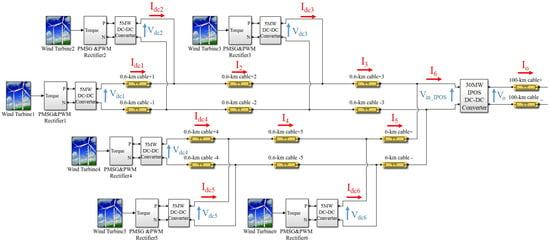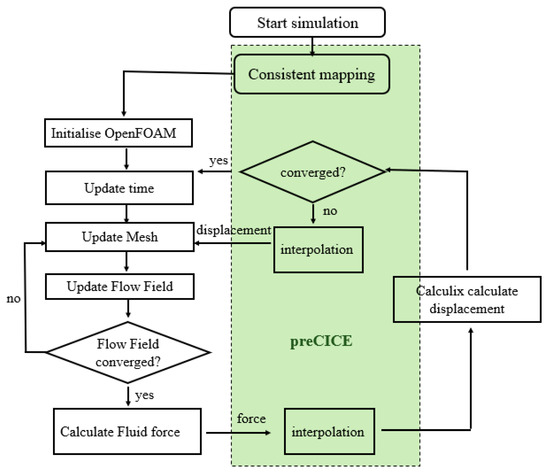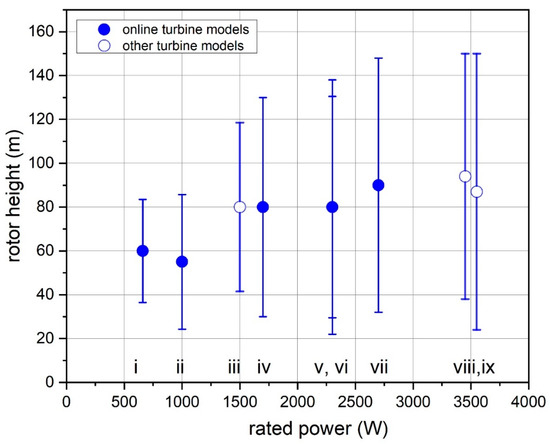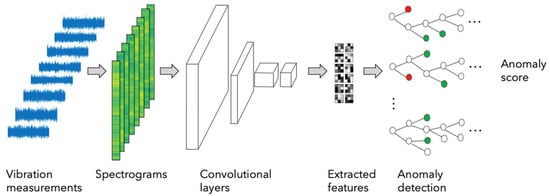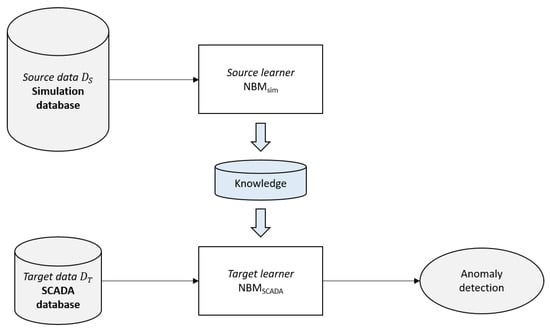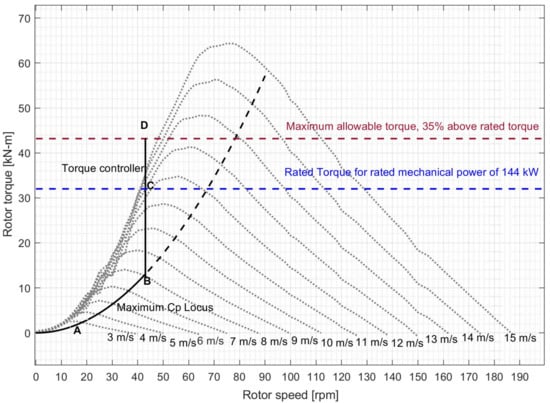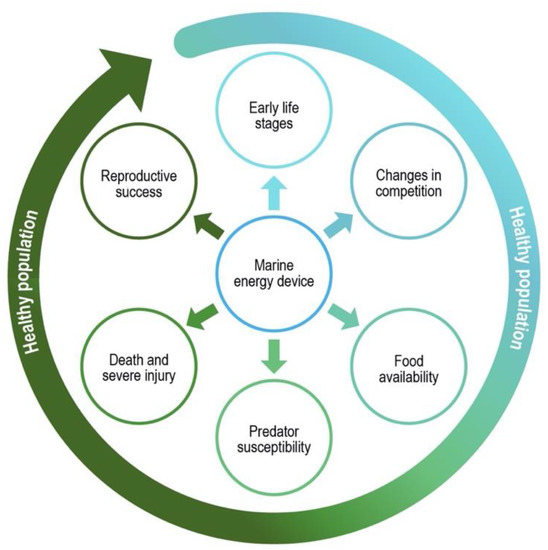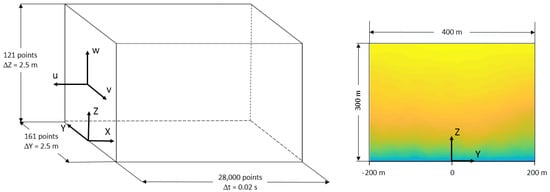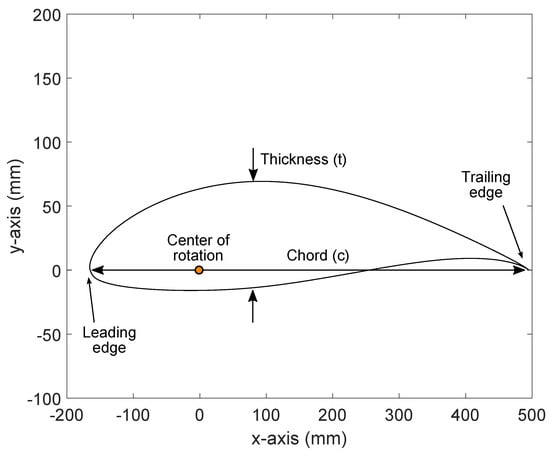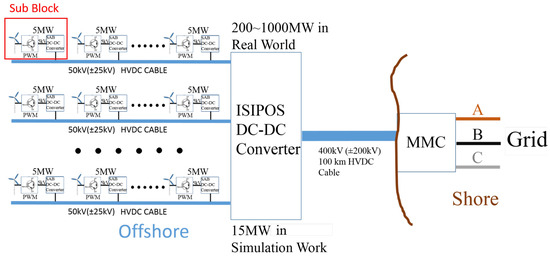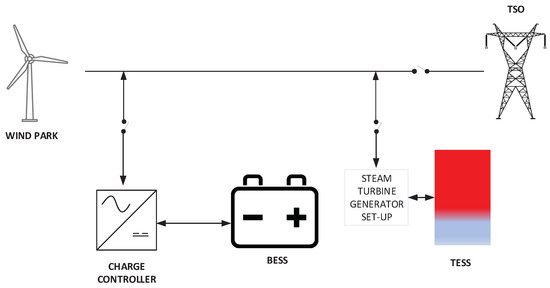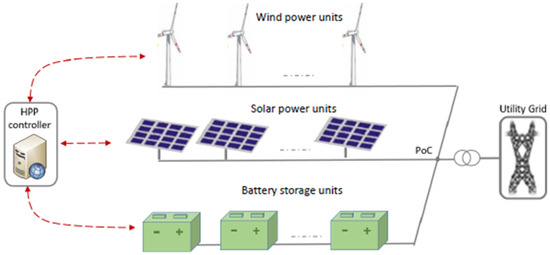Women's Research in Wind and Ocean Energy
Share This Topical Collection
Editors
 Dr. Anca D. Hansen
Dr. Anca D. Hansen
 Dr. Anca D. Hansen
Dr. Anca D. Hansen
E-Mail
Website
Collection Editor
Department of Wind Energy, Technical University of Denmark, 4000 Roskilde, Denmark
Interests: wind power plants modelling, integration and control; ancillary services provision and coordination from and between wind power plants; operation and optimization of distribution networks by employing WPPs technical capabilities
Special Issues, Collections and Topics in MDPI journals
 Dr. Tuhfe Göçmen
Dr. Tuhfe Göçmen
 Dr. Tuhfe Göçmen
Dr. Tuhfe Göçmen
E-Mail
Website
Collection Editor
Department of Wind Energy, Technical University of Denmark, 4000 Roskilde, Denmark
Interests: wind farm flow modelling and control; wake modelling and control; wind farm control; wind power forecasting; wind farm operation monitoring; AI and machine learning applications in wind energy; wind turbine structural state monitoring and forecasting; wind power market participation
 Prof. Dr. Elisabetta Tedeschi
Prof. Dr. Elisabetta Tedeschi
 Prof. Dr. Elisabetta Tedeschi
Prof. Dr. Elisabetta Tedeschi
E-Mail
Website
Collection Editor
1. Department of Electric Power Engineering, Norwegian University of Science and Technology, 7030 Trondheim, Norway
2. Department of Industrial Engineering, University of Trento, 38122 Trento TN, Italy
Interests: ocean energy; control of wave energy converters; marine energy grid integration, microgrids and offshore isolated power systems; power quality; HVDC and HVAC power transmission; energy storage applications; subsea power distribution
Special Issues, Collections and Topics in MDPI journals
 Prof. Dr. Qing Xiao
Prof. Dr. Qing Xiao
 Prof. Dr. Qing Xiao
Prof. Dr. Qing Xiao
E-Mail
Website
Collection Editor
Department of Naval Architecture, Ocean & Marine Engineering, University of Strathclyde, Glasgow G4 0LZ, UK
Interests: marine renewable energy; modelling of fluid-structure-interaction for wave energy converter; bio-inspired tidal energy device and offshore floating wind turbine
Special Issues, Collections and Topics in MDPI journals
Topical Collection Information
Dear Colleagues,
The Collection "Women's Research in Wind and Ocean Energy" is dedicated to research teams including women scientists who deal with wind and ocean energy topics such as:
- wind/ocean power grid integration
- wind/ocean farms optimal design and control
- wind/ocean power plants’ ancillary services
- wind/ocean climate modelling and monitoring
- wake steering
- new concepts for wind, wave and tidal energy converters
- modelling and control of wind/ocean energy converters
- multi-sources & multi-purposes offshore power plants
This Collection aims to illustrate the contributions of gender-diverse research teams in the field of wind, wave, tidal, and ocean thermal energy and their integration into the electrical power systems. Contributions from women scientists are therefore strongly encouraged in order to promote gender equality, celebrate, and foster a research environment where wider diversity is valued.
Wind and ocean (particularly wave and tidal) energy systems offer a vast potential for growth worldwide. The onshore and offshore exploitation of wind, as well as nearshore and offshore wind/ocean energy absorption are setting new challenges for economic development, while simultaneously reducing carbon emissions. In Europe, wind energy is expected to be the leading technology to enable the economy to recover after the COVID-19 emergency and towards the European Green Deal’s goal of being a climate neutral continent by 2050. Although at an earlier stage of development, other ocean energy technologies will also contribute to such ambitious targets and to revitalizing Europe’s coastal regions. The U.S. has a large offshore wind and ocean energy resources with a power potential of more than 2,000 gigawatts (GW). This potential presents an enormous opportunity to deliver large amounts of clean and reliable electricity to the country’s largest population centers, where it is needed most. According to IRENA, a prominent shift in deployment will also happen in Asian waters in the next decades. Asia will dominate the global offshore wind power installations by 2050, followed by Europe and North America.
Prof. Dr. Anca D. Hansen
Dr. Tuhfe Göçmen
Prof. Dr. Elisabetta Tedeschi
Dr. Anne Blavette
Dr. Qing Xiao
Collection Editors
Manuscript Submission Information
Manuscripts should be submitted online at www.mdpi.com by registering and logging in to this website. Once you are registered, click here to go to the submission form. Manuscripts can be submitted until the deadline. All submissions that pass pre-check are peer-reviewed. Accepted papers will be published continuously in the journal (as soon as accepted) and will be listed together on the collection website. Research articles, review articles as well as short communications are invited. For planned papers, a title and short abstract (about 100 words) can be sent to the Editorial Office for announcement on this website.
Submitted manuscripts should not have been published previously, nor be under consideration for publication elsewhere (except conference proceedings papers). All manuscripts are thoroughly refereed through a single-blind peer-review process. A guide for authors and other relevant information for submission of manuscripts is available on the Instructions for Authors page. Energies is an international peer-reviewed open access semimonthly journal published by MDPI.
Please visit the Instructions for Authors page before submitting a manuscript.
The Article Processing Charge (APC) for publication in this open access journal is 2600 CHF (Swiss Francs).
Submitted papers should be well formatted and use good English. Authors may use MDPI's
English editing service prior to publication or during author revisions.
Keywords
- wind/ocean power plants modelling and control
- wind/ocean power converters optimal design and control
- wind/ocean climate modelling and monitoring
- multi-sources & multi-purposes offshore power plants
- technical requirements of grid-connected wind/ocean power plants
- techno-economic analysis of wind/ocean farms and wind/ocean power grid integration
- law and governance related to wind/ocean energy
- storage for wind/ocean power
- environmental impact of wind/ocean farms
Published Papers (13 papers)
Open AccessArticle
The Study of Multi-Terminal DC Systems in an Offshore Wind Environment: A Focus on Cable Ripple Analysis
by
Xiaoyun Rong, Jonathan K. H. Shek, D. Ewen Macpherson and Phil Mawby
Viewed by 209
Abstract
This paper studies the THD and AC losses on the DC cables of offshore wind farm-based multi-terminal HVDC systems when they extract and deliver power from and to more than one connection point. In the paper, the study of a full system PLECS
[...] Read more.
This paper studies the THD and AC losses on the DC cables of offshore wind farm-based multi-terminal HVDC systems when they extract and deliver power from and to more than one connection point. In the paper, the study of a full system PLECS + Simulink model with two branches, including a wind resource, a wind turbine, a Permanent Magnet Synchronous Generator (PMSG), a Pulse Width Modulation (PWM) rectifier, a Single Active Bridge (SAB) DC–DC converter, an Input Parallel Output Series (IPOS) DC–DC converter, HVDC cables, and a simplified onshore system, is presented. It focuses on the investigation of the output ripple content of multiple DC–DC converters on DC cables under different wind conditions with different voltage and power ratings. The importance of the study is providing a general understanding of the operation of the innovative offshore wind farm-based DC system, as well as the interaction between different DC–DC converters and their influence on cable ripple content under different situations.
Full article
►▼
Show Figures
Open AccessArticle
A Numerical Study on an Oscillating Water Column Wave Energy Converter with Hyper-Elastic Material
by
Xiang Li and Qing Xiao
Cited by 6 | Viewed by 1338
Abstract
A model different from the traditional WEC, known as the flexible wave energy converter (fWEC), is numerically modeled in this paper. The fWEC is believed to be more efficient and has a greater range of operation when compared with the conventionally rigid WEC.
[...] Read more.
A model different from the traditional WEC, known as the flexible wave energy converter (fWEC), is numerically modeled in this paper. The fWEC is believed to be more efficient and has a greater range of operation when compared with the conventionally rigid WEC. A fully coupled fluid–structure interaction (FSI) tool is developed for the research performed in this paper. This tool is able to accommodate the dynamic interaction between the flexible membrane structure of the fWEC and the surrounding fluid. In this research, both linear-elastic and hyper-elastic materials are examined for their use in the fWEC. The fluid flow surrounding the fWEC is solved by a computational fluid dynamics (CFD) method. The deformation of the hyper-elastic structure within the fWEC is modeled using a finite element analysis method (FEA). Both the hyper-elastic material of the fWEC and the free surface wave contribute to the overall nonlinearity of the numerical simulation. To tackle this problem, a robust coupling scheme is implemented by an advanced coupling library. With this tool, the flexible deformations within the fWEC structure can be accurately captured. The degree of these deformations can then further be examined, allowing the overall effects on the fWEC energy output to be determined. The simulation results show that the peak deformation of the hyper-elastic material is four times that of the linear-elastic material. This suggests that the fWEC would perform better and generate greater power using the hyper-elastic material compared with the linear-elastic material. Additionally, because a wide range of wave conditions are studied, it can be concluded that unlike conventional WECs, the efficiency of energy harvesting of such an fWEC is not sensitive to certain wave periods. Such findings are supported by both the detailed flow fields captured and the structural stress–strain analysis results from this simulation.
Full article
►▼
Show Figures
Open AccessArticle
Deploying Taller Turbines in Complex Terrain: A Hill Flow Study (HilFlowS) Perspective
by
Sonia Wharton and Kathryn Foster
Viewed by 1441
Abstract
Terrain-induced flow acceleration is presented for the summertime, peak power season at Lawrence Livermore National Laboratory’s Site 300 for the Hill Flow Study (HilFlowS). HilFlowS, designed as an adjunct field campaign to the Department of Energy’s Second Wind Forecasting Improvement Project (WFIP2), provides
[...] Read more.
Terrain-induced flow acceleration is presented for the summertime, peak power season at Lawrence Livermore National Laboratory’s Site 300 for the Hill Flow Study (HilFlowS). HilFlowS, designed as an adjunct field campaign to the Department of Energy’s Second Wind Forecasting Improvement Project (WFIP2), provides wind profile observations at a second location in complex terrain for validating numerical atmospheric model simulations and for better understanding flow behavior over hills for wind power generation. One unique feature of HilFlowS was the inclusion of an undergraduate university student who helped plan and execute the experiment as well as analyze wind data from two remote sensing laser detection and ranging (lidar) instruments deployed along parallel ridgelines. HilFlowS examines the trend of building higher into the atmosphere for the purpose of increasing wind turbine power production and evaluates the wind resource in the Altamont Pass Region of Northern California for a set of wind turbines of differing hub-heights and rotor-disk diameters found in the area. The wind profiles show strongly channeled onshore flow above both hills, enhanced by strong subsidence aloft, which produces a wind maximum (Umax) around z = 10 m and strong negative shear throughout all of the evaluated rotor-disks for much of the summer wind season. Under these conditions, shear becomes more negative with increasing hub-height and increasing rotor-disk size. Rotor-disk equivalent wind speed (Uequiv), a measure of the average wind speed across the entire rotor-disk, is compared to hub-height, rotor length, and rated capacity factor for the set of turbines. Uequiv is most closely related to turbine hub-height and is negatively correlated given the low altitude of Umax. Based on these results, building the largest capacity, large rotor-disk wind turbine at the lowest possible hub-height appears to provide turbines in the Altamont with a fast, near-surface, onshore wind resource during the peak power season.
Full article
►▼
Show Figures
Open AccessArticle
Vibration Fault Diagnosis in Wind Turbines Based on Automated Feature Learning
by
Angela Meyer
Cited by 21 | Viewed by 2607
Abstract
A growing number of wind turbines are equipped with vibration measurement systems to enable the close monitoring and early detection of developing fault conditions. The vibration measurements are analyzed to continuously assess the component health and prevent failures that can result in downtimes.
[...] Read more.
A growing number of wind turbines are equipped with vibration measurement systems to enable the close monitoring and early detection of developing fault conditions. The vibration measurements are analyzed to continuously assess the component health and prevent failures that can result in downtimes. This study focuses on gearbox monitoring but is also applicable to other subsystems. The current state-of-the-art gearbox fault diagnosis algorithms rely on statistical or machine learning methods based on fault signatures that have been defined by human analysts. This has multiple disadvantages. Defining the fault signatures by human analysts is a time-intensive process that requires highly detailed knowledge of gearbox composition. This effort needs to be repeated for every new turbine, so it does not scale well with the increasing number of monitored turbines, especially in fast-growing portfolios. Moreover, fault signatures defined by human analysts can result in biased and imprecise decision boundaries that lead to imprecise and uncertain fault diagnosis decisions. We present a novel accurate fault diagnosis method for vibration-monitored wind turbine components that overcomes these disadvantages. Our approach combines autonomous data-driven learning of fault signatures and health state classification based on convolutional neural networks and isolation forests. We demonstrate its performance with vibration measurements from two wind turbine gearboxes. Unlike the state-of-the-art methods, our approach does not require gearbox-type-specific diagnosis expertise and is not restricted to predefined frequencies or spectral ranges but can monitor the full spectrum at once.
Full article
►▼
Show Figures
Open AccessArticle
Using Transfer Learning to Build Physics-Informed Machine Learning Models for Improved Wind Farm Monitoring
by
Laura Schröder, Nikolay Krasimirov Dimitrov, David Robert Verelst and John Aasted Sørensen
Cited by 6 | Viewed by 1997
Abstract
This paper introduces a novel, transfer-learning-based approach to include physics into data-driven normal behavior monitoring models which are used for detecting turbine anomalies. For this purpose, a normal behavior model is pretrained on a large simulation database and is recalibrated on the available
[...] Read more.
This paper introduces a novel, transfer-learning-based approach to include physics into data-driven normal behavior monitoring models which are used for detecting turbine anomalies. For this purpose, a normal behavior model is pretrained on a large simulation database and is recalibrated on the available SCADA data via transfer learning. For two methods, a feed-forward artificial neural network (ANN) and an autoencoder, it is investigated under which conditions it can be helpful to include simulations into SCADA-based monitoring systems. The results show that when only one month of SCADA data is available, both the prediction accuracy as well as the prediction robustness of an ANN are significantly improved by adding physics constraints from a pretrained model. As the autoencoder reconstructs the power from itself, it is already able to accurately model the normal behavior power. Therefore, including simulations into the model does not improve its prediction performance and robustness significantly. The validation of the physics-informed ANN on one month of raw SCADA data shows that it is able to successfully detect a recorded blade angle anomaly with an improved precision due to fewer false positives compared to its purely SCADA data-based counterpart.
Full article
►▼
Show Figures
Open AccessConcept Paper
Global Dynamic Response of a Medium-Sized Floating Offshore Wind Turbine with Stall Regulation
by
Moe Moe Aye and Uwe Ritschel
Viewed by 1974
Abstract
In this paper, a two-bladed medium-sized floating wind turbine with variable speed and power regulation by stall is studied. For floating offshore wind turbines, the major challenges are related to the dynamical behavior of the system in response to combined wind and wave
[...] Read more.
In this paper, a two-bladed medium-sized floating wind turbine with variable speed and power regulation by stall is studied. For floating offshore wind turbines, the major challenges are related to the dynamical behavior of the system in response to combined wind and wave loading. Especially for smaller systems, the coupling of aerodynamic and wave forces may lead to large amplitude motions. Coupled aero-hydro-servo-elastic simulations are carried out in OpenFAST. The goal of the study is to investigate the global dynamic response of the hypothetical wind turbine with stall regulation. Stall regulation concept is proposed and the structural loads are computed and results are presented and discussed.
Full article
►▼
Show Figures
Open AccessArticle
Biological Consequences of Marine Energy Development on Marine Animals
by
Lenaïg G. Hemery, Andrea E. Copping and Dorian M. Overhus
Cited by 2 | Viewed by 3271
Abstract
Marine energy devices harness power from attributes of ocean water to form a sustainable energy source. Knowledge gaps remain about whether marine energy systems can affect the environment, adding another threat to animal populations and habitats already under pressure from climate change and
[...] Read more.
Marine energy devices harness power from attributes of ocean water to form a sustainable energy source. Knowledge gaps remain about whether marine energy systems can affect the environment, adding another threat to animal populations and habitats already under pressure from climate change and anthropogenic activities. To date, potential environmental effects have been studied under the scope of stressor–receptor interactions, where moving parts of, or emissions from, a system could harm the animals, habitats, and natural processes. While crucial for understanding effects and identifying knowledge gaps, this approach misses a holistic view of what animals may experience in the presence of marine energy systems. We look at six biological consequences and forces that drive the health of an animal population and the effects expected from marine energy development: success of early life stages; changes in competitive capabilities; growth and survival based on food availability; susceptibility to predators; injury or death; and reproductive success. We use case studies to develop this approach, focusing on a variety of marine animals. An approximate level of risk is assigned for each interaction based on the biological consequences. This work highlights the need to examine the effects of marine energy development on animal populations within their natural habitats.
Full article
►▼
Show Figures
Open AccessFeature PaperArticle
The Importance of Wake Meandering on Wind Turbine Fatigue Loads in Wake
by
Jennifer Marie Rinker, Esperanza Soto Sagredo and Leonardo Bergami
Cited by 3 | Viewed by 1926
Abstract
Considering loads when optimizing wind-farm layouts or designing farm-control strategies is important, but the computational cost of using high-fidelity wake models in the loop can be prohibitively high. Using simpler models that consider only the spatial variation of turbulence statistics is a tempting
[...] Read more.
Considering loads when optimizing wind-farm layouts or designing farm-control strategies is important, but the computational cost of using high-fidelity wake models in the loop can be prohibitively high. Using simpler models that consider only the spatial variation of turbulence statistics is a tempting alternative, but the accuracy of these models with respect to the aeroelastic response is not well understood. This paper therefore highlights the effect of replacing wake meandering with spatially varying statistics (“profile functions”) in the inflow to a downstream turbine. Profile functions at different downstream and lateral locations are extracted from a large-eddy simulation with an upstream turbine and compared with two lower-fidelity models: one that prescribes both the mean and standard deviation of the turbulence and one that prescribes only the mean. The aeroelastic response of an NREL 5 MW wind turbine is simulated with the three different wake-model fidelities, and various quantities of interest are compared. The mean values for the power and rotor speed for the medium-and low-fidelity model match well, but the accuracy of the fatigue loads varies greatly depending on the load channel. Prescribing the profile function for the standard deviation is only beneficial for the tower-base fore-aft moment; all other DELs had similar accuracies for both the medium- and low-fidelity models. The paper concludes that blade DELs can be estimated using these simple models with some accuracy, but care should be taken with the load channels related to the shaft torsion and tower-base fore-aft bending moment.
Full article
►▼
Show Figures
Open AccessArticle
Finite Element Analysis of Tidal Turbine Blade Subjected to Impact Loads from Sea Animals
by
Ilias Gavriilidis and Yuner Huang
Cited by 3 | Viewed by 2295
Abstract
The present work investigates structural response of tidal stream turbine blades subjected to impact loads from sea animals. A full-scale tidal turbine blade model was developed using a finite element modelling software ABAQUS, while a simplified geometry of an adult killer whale (
[...] Read more.
The present work investigates structural response of tidal stream turbine blades subjected to impact loads from sea animals. A full-scale tidal turbine blade model was developed using a finite element modelling software ABAQUS, while a simplified geometry of an adult killer whale (
Orcinus orca) was assumed in simulating impact on the blade. The foil profiles along the turbine blade were based on the NACA 63-8XX series, while the geometric and material properties of the sea animal were calibrated with experimental results. The numerical model simulated the dynamic response of the blade, accounting for radial velocities of the blade corresponding to real life scenarios. Different magnitudes and trajectories of the velocity vector of the sea animal were simulated, in order to investigate their influence on the turbine blade’s plastic deformation. Furthermore, multiple impacts were analysed, in order to monitor the accumulation of plastic strain in the material of the blade. Finally, the potential application of stainless steel material in tidal stream turbine blades for impact resistance was evaluated, through comparison of numerical results obtained from models using stainless steel and mild carbon steel materials.
Full article
►▼
Show Figures
Open AccessArticle
The Effects of Filter Capacitors on Cable Ripple at Different Sections of the Wind Farm Based Multi-Terminal DC System
by
Xiaoyun Rong, Jonathan K. H. Shek, D. Ewen Macpherson and Phil Mawby
Cited by 2 | Viewed by 1448
Abstract
In most DC power systems, power electronic devices can introduce ripple content into the DC grid, where large input ripple currents on the DC link can have a negative influence. Under these circumstances, DC side filters play an important role in the reduction
[...] Read more.
In most DC power systems, power electronic devices can introduce ripple content into the DC grid, where large input ripple currents on the DC link can have a negative influence. Under these circumstances, DC side filters play an important role in the reduction of ripple content. In this paper, based on a full detailed closed loop model of the entire offshore wind farm multi-terminal DC network, the effect of filter capacitors connected at different sections of the system on the limitation of the AC ripple content, particularly in the DC cables, is studied. In contrast to other work on HVDC for offshore wind, where simplified or equivalent circuits are mainly used while concentrating on the power and control system, this study can be regarded as the specific study of filter capacitors operating within a detailed system model. Utilising the advantages of PLECS, which is a highly effective tool in the simulation of power electronic circuits, no small-signal or simplified equivalent models are used in the system, and the entire study is based on detailed and accurate models of the semiconductor elements and transformers, which help to provide more realistic simulation results and a better understanding of the system. Another novel point in this paper is a new concept, relative losses, which is proposed to simplify extensively the calculation of losses in this research. Finally, the size of the filter capacitors at different sections of the system under different situations is suggested.
Full article
►▼
Show Figures
Open AccessReview
Challenges in All-DC Offshore Wind Power Plants
by
Alessandra Follo, Oscar Saborío-Romano, Elisabetta Tedeschi and Nicolaos A. Cutululis
Cited by 12 | Viewed by 2158
Abstract
As the size and distance from shore of new offshore wind power plants (OWPPs) increase, connection to shore using high-voltage (HV) direct-current (DC) technology becomes more cost-effective. Currently, every offshore wind power plant has a collection system based on medium-voltage alternating-current technology. Such
[...] Read more.
As the size and distance from shore of new offshore wind power plants (OWPPs) increase, connection to shore using high-voltage (HV) direct-current (DC) technology becomes more cost-effective. Currently, every offshore wind power plant has a collection system based on medium-voltage alternating-current technology. Such systems rely on heavy and bulky low-frequency (i.e., 50 or 60 Hz) transformers: a drawback offshore, where equipment weight and space are restricted. Consequently, there is growing interest in medium-voltage direct-current collection systems, in which low-frequency transformers are replaced with DC/DC converters equipped with lighter and smaller medium-frequency transformers. However, the deployment of all-DC OWPPs still faces several challenges. Based on a very comprehensive and critical literature review, three of them are identified and discussed in this paper. The first challenge is the technological gap at component level. In this work, the DC/DC converter topologies most suitable for application to OWPPs are described and compared. The second challenge is the controllability of DC collection systems. Parallel, series and hybrid DC collection system layouts are presented and discussed. The third challenge is the compliance of all-DC OWPPs with current requirements for their connection to the onshore grids. The three challenges are discussed to highlight current research gaps and potential future directions.
Full article
►▼
Show Figures
Open AccessArticle
Assessment of Energy Arbitrage Using Energy Storage Systems: A Wind Park’s Perspective
by
Pavani Ponnaganti, Birgitte Bak-Jensen, Brian Vejrum Wæhrens and Jesper Asmussen
Cited by 4 | Viewed by 2041
Abstract
With the growing application of green energy, the importance of effectively handling the volatile nature of these energy sources is also growing in order to ensure economic and operational viability. Accordingly, the main contribution of this work is to evaluate the revenue potential
[...] Read more.
With the growing application of green energy, the importance of effectively handling the volatile nature of these energy sources is also growing in order to ensure economic and operational viability. Accordingly, the main contribution of this work is to evaluate the revenue potential for wind parks with integrated storage systems in the day-ahead electricity markets using genetic algorithm. It is achieved by the concept of flexible charging–discharging of the Energy Storage System (ESS), taking advantage of the widespread electricity prices that are predicted using a feedforward-neural-network-based forecasting algorithm. In addition, the reactive power restrictions posed by grid code that are to be followed by the wind park are also considered as one of the constraints. Moreover, the profit obtained with a Battery Energy Storage System (BESS) is compared with that of a Thermal Energy Storage System (TESS). The proposed method gave more profitable results when utilizing BESS for energy arbitrage in day-ahead electricity markets than with TESS. Moreover, the availability of ESS at wind park has reduced the wind power curtailment.
Full article
►▼
Show Figures
Open AccessReview
European and Indian Grid Codes for Utility Scale Hybrid Power Plants
by
Anca Daniela Hansen, Kaushik Das, Poul Sørensen, Pukhraj Singh and Andrea Gavrilovic
Cited by 13 | Viewed by 2417
Abstract
The aim of this paper is to review and compare present European and Indian grid code requirements imposed to hybrid power plants (HPPs) combining wind, solar and storage technologies. Since there are no grid codes specifically for HPPs, the paper will review grid
[...] Read more.
The aim of this paper is to review and compare present European and Indian grid code requirements imposed to hybrid power plants (HPPs) combining wind, solar and storage technologies. Since there are no grid codes specifically for HPPs, the paper will review grid codes for the power plant based on individual renewable technology in the HPP. European grid codes specifies ranges for parameters inside which each national transmission system operators (TSO) has to specify the set of national parameters (Danish specifications in this paper). The comparisons are performed with respect to fault-ride-through capability, frequency and voltage operation ranges, active power control/frequency support as well as reactive power control/voltage support.
Full article
►▼
Show Figures
Planned Papers
The below list represents only planned manuscripts. Some of these
manuscripts have not been received by the Editorial Office yet. Papers
submitted to MDPI journals are subject to peer-review.
Title: Challenges and Opportunities in a Distribution Grid with a Large Share of WPPs
Authors: Aeishwarya Umesh Bavishar; Kaushik Das; Anca Daniela Hansen
Affiliation: DTU, Denmark









